6.1.9 Working with Additional IP Addresses in Linux and Windows Server
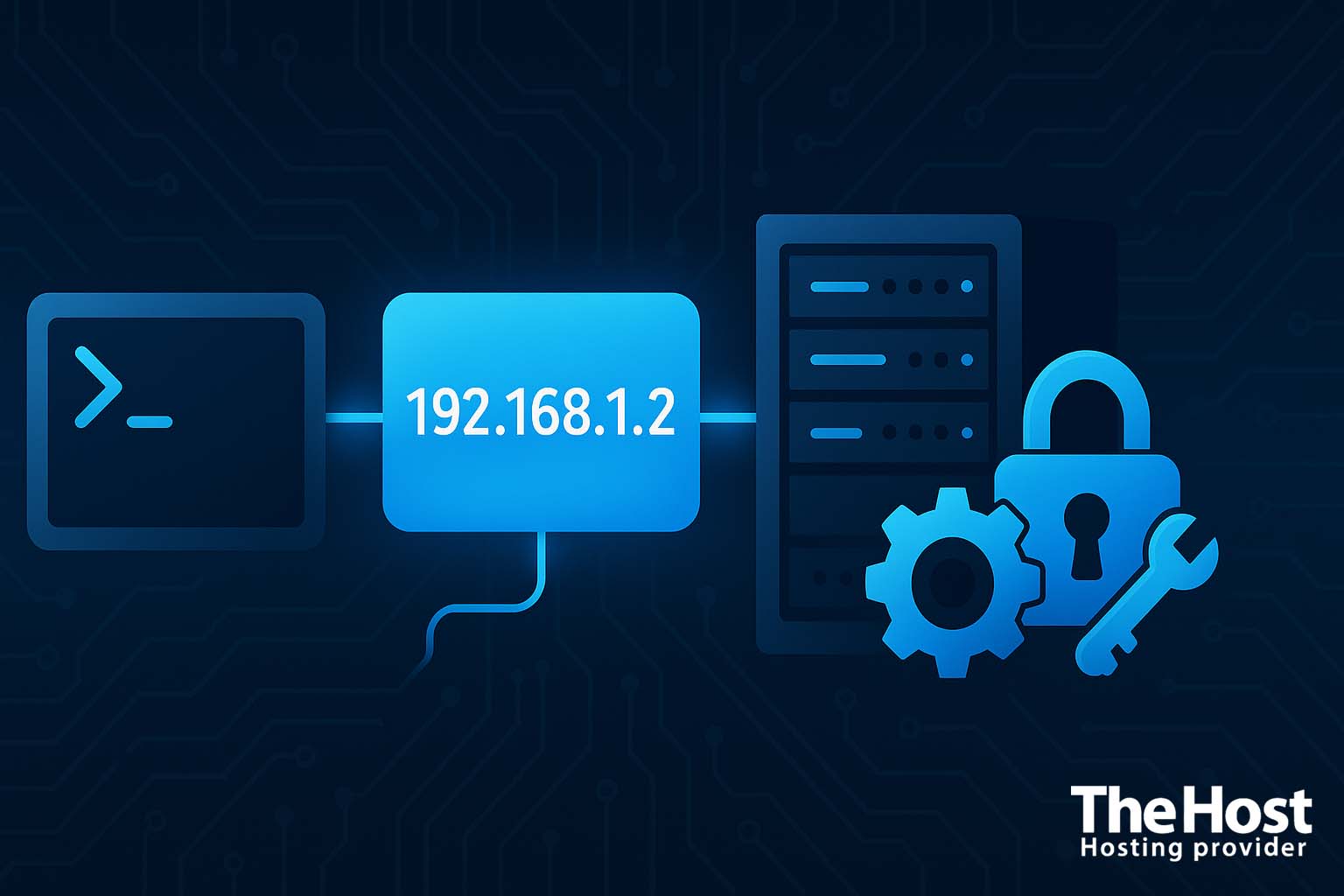
In many administrative tasks, it is necessary to assign multiple IP addresses to a server—whether for proxy services, virtual hosting, or dedicated applications.
This article will guide you through correctly configuring additional IP addresses on Linux (Ubuntu, Debian, CentOS, RHEL, AlmaLinux, RockyLinux) and Windows Server 2022.
Use Cases
- Isolation of projects by IP
- One server hosting multiple SSL sites
- Services restricted by IP (e.g., mail, VPN)
- Virtualization or containerization
System Requirements
Variables to replace
- `ADDITIONAL_IP — additional IPv4 address for the server
ADDITIONAL_IPV6— additional IPv6 address for the serverINTERFACE— network interface name in Linux (eth0,ens3,ens160, etc.)INTERFACE_ALIAS— network adapter alias in Windows (value fromGet-NetAdapter)YOUR_MAIN_IP/MAIN_IP— primary IPv4 address of the serverYOUR_IPV6— primary IPv6 address of the serverNETMASK— subnet mask for IPv4 (e.g.,255.255.252.0)/128— IPv6 subnet prefix (keep128unless your provider specifies otherwise)GATEWAY— default IPv4 gatewayIPV6_GATEWAY— default IPv6 gatewayGATEWAY_IP— gateway specified when adding an IP in Windows PowerShellDNS_1/<DNS_2>— DNS server addresses for IPv4DNS6_1/<DNS6_2>— DNS server addresses for IPv6
Temporary IP Assignment in Linux
To assign an IP address temporarily on Linux, run the following command:
IPv4
sudo ip addr add ADDITIONAL_IP dev INTERFACE
Note: replace ADDITIONAL_IP with the additional IP address and INTERFACE with the name of your network interface.
IPv6
sudo ip -6 addr add ADDITIONAL_IPV6/112 dev INTERFACE
Note: substitute ADDITIONAL_IPV6/112 and INTERFACE with your actual values.
Ubuntu/Debian
First, determine whether the old ifupdown system is in use:
dpkg -l | grep ii | awk '{print $2}' | grep ifupdown | wc -l
Returns 1 if ifupdown is installed, or 0 if not.
Check current network interfaces:
ip addr show
Output will list interfaces such as eth0, ens3, ens160.

Permanent Add via ifupdown
Open the configuration file:
sudo nano /etc/network/interfaces
Example configuration with an alias:
# Primary interface IPv4 + IPv6
auto eth0
iface eth0 inet static
address YOUR_MAIN_IP
netmask NETMASK
gateway GATEWAY
dns-nameservers DNS_1 DNS_2
iface eth0 inet6 static
address YOUR_IPV6
netmask 112
gateway IPV6_GATEWAY
dns-nameservers DNS6_1 DNS6_2
# Additional IPv4 (alias)
auto eth0:0
iface eth0:0 inet static
address ADDITIONAL_IP
netmask NETMASK
# Additional IPv6 (alias)
auto eth0:0
iface eth0:0 inet6 static
address ADDITIONAL_IPV6
netmask NETMASK
- eth0 — primary interface
- eth0:0 — alias interface for the extra IP
Note: For address, netmask, gateway, and dns-nameservers values, contact Support.
Apply changes:
sudo systemctl restart networking
Now the extra IP will persist after reboot.
Using Netplan
Netplan configs live in /etc/netplan/. Files must have a .yaml extension. List all desired addresses under your interface:
network:
version: 2
renderer: networkd
ethernets:
ens9:
dhcp4: false
addresses:
- MAIN_IP # Your primary IP
- ADDITIONAL_IP # Additional IP
Test the new config (allows automatic rollback if you don’t confirm within 120s):
sudo netplan try
Or apply immediately (no rollback):
sudo netplan apply
CentOS/RHEL/AlmaLinux/RockyLinux
Determine which IP configuration method is active:
systemctl status NetworkManager
If it shows Active: active (running), NetworkManager is in use. Check its devices:
nmcli device status
To see if legacy scripts are used:
systemctl status network
NetworkManager
Permanent IPv4 add:
nmcli con mod INTERFACE +ipv4.addresses ADDITIONAL_IP
nmcli con up INTERFACE

Verify:
ip a
Network Scripts
cd /etc/sysconfig/network-scripts/
cp ifcfg-eth0 ifcfg-eth0:0
Edit ifcfg-eth0:0:
DEVICE=eth0:0
BOOTPROTO=static
ONBOOT=yes
IPADDR=ADDITIONAL_IP
NETMASK=NETMASK
Note: Replace ADDITIONAL_IP and NETMASK with your values.
Warning: Restart the network stack:
systemctl restart network
or
ifdown eth0:0 ; ifup eth0:0
Windows Server
List IPv4 addresses in PowerShell:
Get-NetIPAddress | Where-Object {$_.AddressFamily -eq "IPv4"}
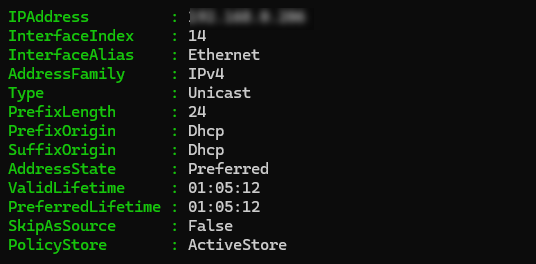
List adapters:
Get-NetAdapter

PowerShell Add
New-NetIPAddress -InterfaceAlias "INTERFACE_ALIAS" -IPAddress "ADDITIONAL_IP" -PrefixLength 32 -DefaultGateway "GATEWAY_IP"
Note: Use your INTERFACE_ALIAS, ADDITIONAL_IP, and GATEWAY_IP.
Verify:
Get-NetIPAddress -InterfaceAlias "INTERFACE_ALIAS"
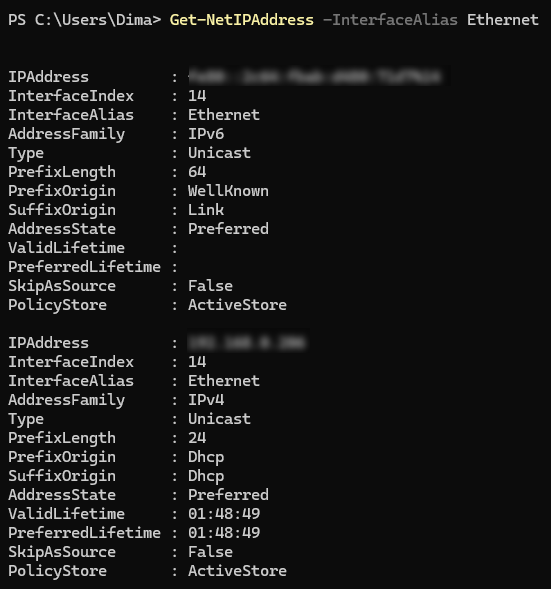
GUI Method
-
Open Start → Settings → Network & Internet
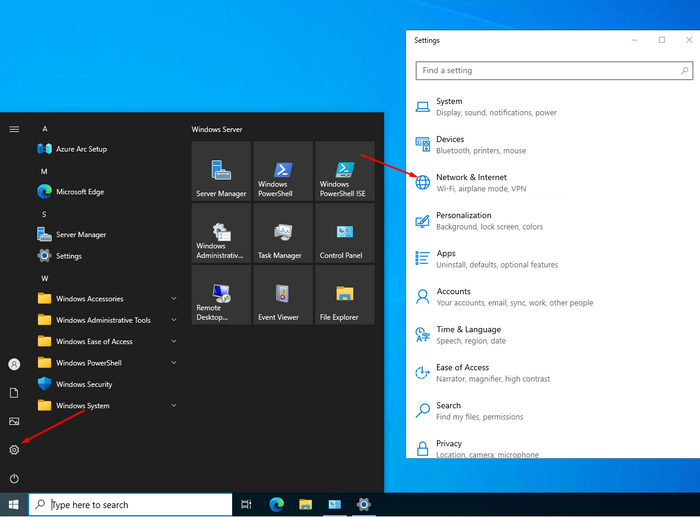
-
Under Status, click Change adapter options
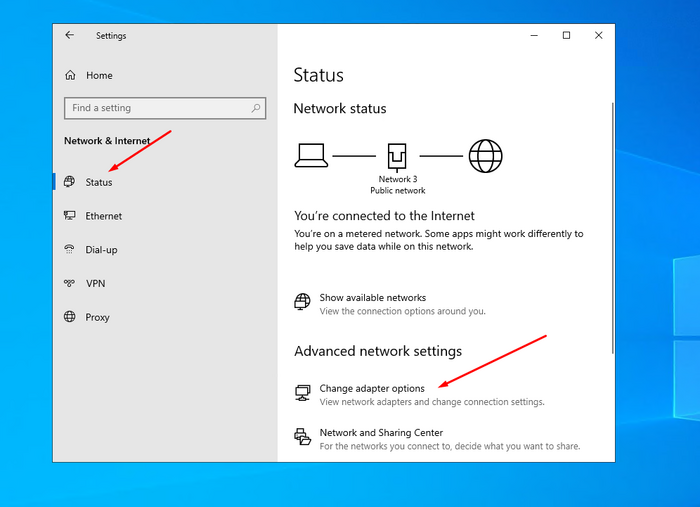
-
Right-click the adapter → Properties
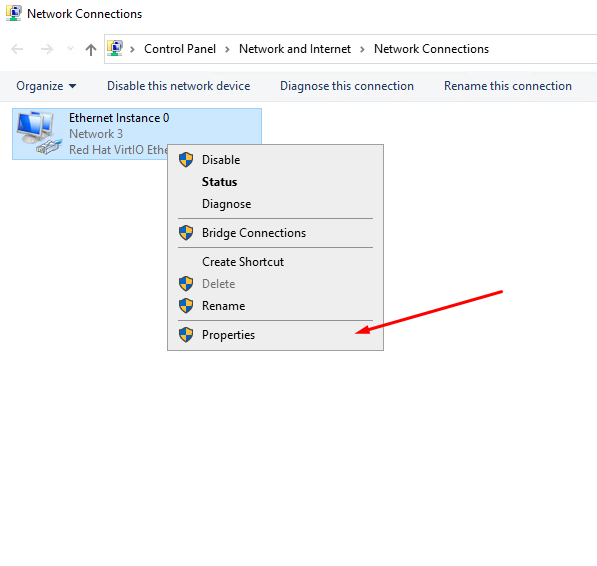
-
Select IPv4 → Properties → Advanced…
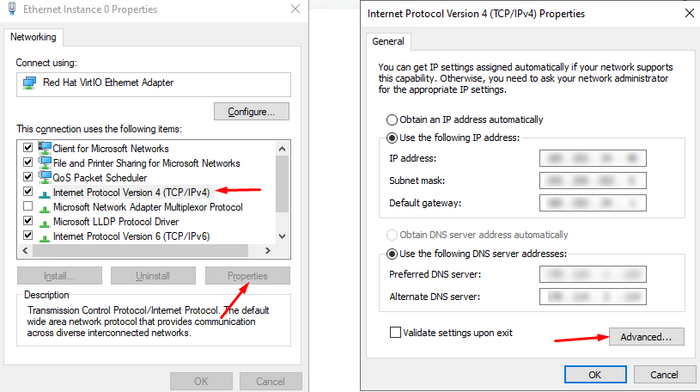
-
Click Add…

-
Enter the extra IP and subnet mask → Add
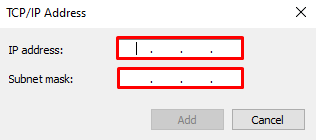
Verification
Note: Run ping tests from a different machine than the one you’re configuring.
Linux:
ping -c 4 ADDITIONAL_IP
Windows:
ping ADDITIONAL_IP
If the IP responds to ping, the configuration is correct.
Common Issues
| Issue | Cause | Solution |
|---|---|---|
| IP disappears after reboot | Added only temporarily | Add via Netplan (Linux) or save with PowerShell (Windows) |
| No traffic on extra IP | Firewall blocking traffic | Configure UFW or Windows Firewall to allow required ports and IPs |
| Incorrect routing | Wrong gateway or prefix length | Verify gateway, netmask, and prefix length |


